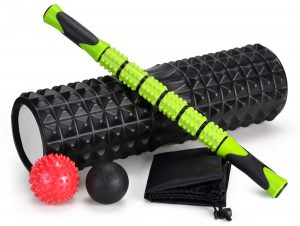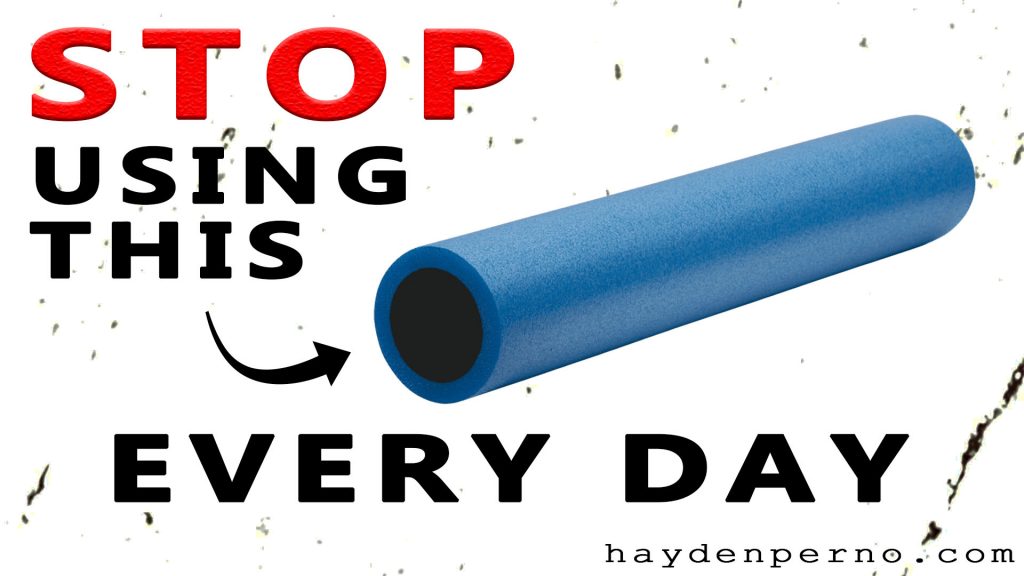Releasing (aka., self-myofascial release—SMR) upset areas of the body is a highly popular activity to many gym-goers these days. People love to whip out their shiny balls (e.g., hockey, base-, golf) and their big, long cylindrical pieces of equipment to work on their tight, painful, restricted areas. They love to spend five, ten, sometimes even more minutes on each individual area, “working” the spot out, focusing on rectifying their issues, and at the same time, seemingly trying to remove their quarterly electricity bill.
For you, this very well might be an enjoyable event. But when a release becomes something that is needed every day, then as the skiing guy off South Park says: you’re gonna have a bad time.
Why? For starters, if your body is cooped up each day, causing you pain and restricting your movement capabilities, a release is only temporary fix. Which is plainly obvious if you are back at it upon the same area the very next day.
This fad for releasing tight/painful/upset areas on the body, is akin to the “corrective exercise” trend that swept through the health and fitness realm perhaps four to five years ago. Back then, people were prescribing drills to themselves or their clients every day, in the hope of fixing their issues.
But like the incessant need—or is it desire?—to release areas on one’s body every day, corrective exercises are supposed to work in one way: they must correct an issue. Similarly, a release is supposed to work in the same way: it should correct an issue, allowing for freedom once again.

If a release helps you, that’s fine, but what happens next? Another release? The same release the next day? Or, do you start paying attention to what might be causing the grievance to arise in the first place?
In a perfect world, people would pay more attention to the latter thought. But unfortunately, the trend around releasing is something people constantly fall back on. Releasing upset areas, or simply booking in to see a masseuse or dry needler each week, is just masking the issue. Things need to be dealt with.
If you’re lost, consider these two scenarios that very well may be playing a role in impacting your own tight areas to consistently appear and reappear, over and over again:
1. Your posture in daily life sucks. For example, you might hunch all the time while working at the computer or driving your car, or poke that head too far forward as you stare into the computer screen, rounding your shoulders forward to reach the mouse and keyboard.
2. Your movements while you exercise suck. For example, your bench press, squat, or deadlift technique might be a little off. This might cause your shoulders to stiffen, causing pain in your elbows. Your upper body might suffer, causing your lower back and hips to tighten up. Et cetera!
To counteract scenarios like the above, all one must do is step back a little. If you, say, notice your hunched posture while you drive around or type away at your computer, straighten up. Stand up every now and then. If you notice that your elbows are always flaring up after you bench press, re-learn your technique. If you feel like your knees become upset after a squat day or your jog, reassess foot, ankle, knee, and hip stability.
A myriad of examples and answers could be inserted here. But the main point of all this is simple: if you rely on a release to keep you going, things will catch up. If you keep ignoring the blatantly obvious, things will collapse.
A release is not meant to be something that is inserted in your day-to-day life, and you would always benefit far more by paying attention to habits that encircle your exercise activities.
Do you have questions? Drop ‘em below and I’ll do my best to answer them. Alternatively, hit that contact button at the top of this page.


